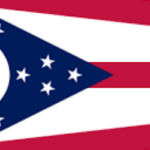
Published October 24, 2023
Ida Friederike who?? Ida Friederike Görres was once a well known Catholic author in German-speaking Europe, Britain, and the US. Yet, at her death in 1971, hers was exactly the kind of voice none of the emerging powers wanted to hear; they were busy paving the way for “The Synodal Way” and they knew her work pointed down a different path. Görres’s many publications were deemed unsuitable for the so-called distinctly “post-Vatican II church” because they were rooted in a Church that extended back nearly 2000 years and whose past was an inherent part of the future of the Church. As she wrote in 1960, “Is not the secret crisis of so many fellow believers, often hardly conscious, that they can no longer think of the past and the future together in the Church?” She considered that a “crisis,” not a desirable rupture to foster.
Today, Görres has been almost entirely forgotten in German-speaking Europe. She is arguably more well known in the USA now than in German-speaking Europe. When I tell Catholics in Austria, where I live, why I am here, I have learned to tell them merely that I am translating the works of “a Catholic author.” Were I to mention her name, I would be met only with blank, baffled stares and the question, “Ida who??” or at very best, and only rarely, a shrug accompanied by the remark, “Uh, I think I’ve heard the name but I don’t know anything about her”; and essentially no one is interested in finding out. But in the USA, recent interest of Catholic readers and publishers in her work has been significant, and with good reason.
Ida Friederike Görres, née von Coudenhove-Kalergi, was born in 1901 to an aristocratic family in Bohemia. Her father was a diplomat for the Habsburg empire in Japan in the late 1800s. There, he met her mother, the daughter of a Japanese antiques dealer. Her father died when Ida Görres was young. Her mother was cold toward her and her two sisters, even telling them they were “ugly” because of their mixed Asian-European features, while the mother embraced her four sons. The family was Catholic—her mother had converted to marry her father—though her father and brothers were quite taken by Liberalism.
Görres attended a Catholic girls boarding school in Vienna followed by one in St. Pölten. In St. Pölten, Ida discovered what love is among the Mary Ward Sisters who ran the school. Also in St. Pölten, she had a conversion experience at age sixteen that changed the trajectory of her life. The loving mother of Ida’s life became the Catholic Church. In the early 1920s, she spent two years in the novitiate of the Mary Ward Sisters but that was not her call. She subsequently played a significant role in the Catholic Youth Movement during a period of tremendous Catholic revival. She was particularly active in the German branch of it known as Quickborn, led by Fr. Romano Guardini.
Görres had a gift for writing from her youngest years. Her first publication, already at age 19, was a play about the Song of Songs. Throughout the 1920s and early 1930s, Görres wrote articles in the prominent journals of the Catholic Youth Movement and she led ministries in the movement for girls and young women. In the early 1930s, she began publishing books. Her first, a dialogue called The Nature of Sanctity, was translated into English, published by Sheed and Ward, and Christopher Dawson and T. F. Burns included it in an anthology they edited.
In 1930, Görres wrote an insightful article about Undset’s novel The Wild Orchid. (She loved the work of Sigrid Undset. Görres mentions and quotes Undset’s novels in her work.) In the mid-1930s, she wrote a dialogue about The Burden of Belief in the modern world and a set of “letters” to young women about vocations called The Cloister and the World, also published in English by Sheed and Ward.
During the Nazi era, she saw dangers in the new image of “woman” promoted by the Nazi ideology. One way she sought to counter it was by writing and editing collections of short stories for girls and young women with sound female models. She knew that stories are a powerful medium and through her creativity she was also able to get past the censors. In the late 1940s, she wrote a beautiful book of letters to young women with Catholic insights on marriage and what it might mean to take a Catholic approach to the problematic, relatively new phenomenon of being single that was becoming common in the dual wake of so many men having been killed in the war and the rise of the “career-woman” fostered by feminism.
Görres and her husband were unable to have children, which was likely the most painful wound in her life (as discussed in Volume 2 of The Theology of Home, whom the authors included as a model of feminine fruitful living even when children are sought but denied). Her life centered around her marriage and homelife while her public work included speaking at Catholic events, providing instruction to converts, and, most of all, writing.
Non-fiction was her primary genre, with a focus on the Catholic faith, the Church, the saints, and how to counter the challenges of the era. She also wrote poetry, some plays, and a few short stories. Her hagiographic works garnered particularly high respect. Her most famous book, and rightly so, is The Hidden Face: A Study of St. Thérèse of Lisieux. She also wrote books about Ven. Mary Ward and St. John Henry Newman, and essays about other saints and sanctity. She was doing research for a book about Bl. Anne Catherine Emmerich, but died before completing it.
In 1946, she was caught up in controversy following the publication of her frank “Letter on the Church.” While many thanked her privately for acknowledging problems in the Church, publicly she was chastised, most of all from the Church hierarchy. Yet, as an historian of this controversy has pointed out, their criticisms tended to reflect their own worries of the era more than the actual content of the “Letter.” Beyond the controversy, Görres loved the Church and devoted her life’s work to moving sleeping and even what appeared to be dying souls to a living faith in Christ and His Church. Thus, she continued to write, even through years of major health problems following the upheaval in 1946.
One of her most significant books was The Church in the Flesh, published in 1950 and just released this month for the first time in English by Cluny Media (my translation). In The Church in the Flesh, Görres writes six “letters” to Catholics who are confused or even having doubts about their faith because they think embracing the zeitgeist is more exciting, more rational—or more likely to make them look cool and “up to date” in the eyes of others—than what seems to them like merely old-fashioned, fuddy-duddy, churchy stuff. She steers her readers back to the heart of the Church by guiding them—and all of us today—with love, insight in spades, and elegant prose in chapters such as “The Nuisance of Morality” (why we can’t be simply “spiritual but not religious”) and “The Enthroned” (why Jesus is King, not merely a man who was nicer than most other people). The final chapter of the book is on the topic for which Görres was most famous, “Church of the Saints”; it reads like an exciting crescendo at the conclusion of a symphony. As my friend Kent Hill wrote to me, “Read the sixth letter today on saints and the Church, and this letter alone is worth the price of the book.”
In the 1950s, Görres presciently began to criticize trends that would later become hot button issues, such as contraception, abortion, and euthanasia. In her journals, she observed, “If marriages are going to remain deliberately sterile, then there is no longer any logical, conclusive argument against homosexuality.” And noting the disconnect in culture between morality and the culture’s criteria for public prestige, she wrote:
One has long been able to despise and mock God—and at the same time be a person of “excellent character”: … an accomplished and trendsetting lady and at the same time a child-murderer multiple times over through abortion … And can’t we all imagine that in the foreseeable future it could be good form to have one’s elderly parents or seriously ill spouses murdered discreetly and hygienically in a health facility without forfeiting the slightest in reputation as a highly decent, ethically exemplary person?
On the eve of the Second Vatican Council, some of the conservatives who had criticized her “Letter on the Church” began to realize she had long been their ally, while the Catholic Left in Germany that had tried to use her “Letter on the Church” as a battering ram against the fortifications of the Church had come to realize she was and had long been critical of their basic premises. In her writings from the mid-1960s until her death in 1971, she addressed the rapidly multiplying controversies about what had formerly been taken for granted in the Church: she defended celibacy, she opposed women’s ordination, she became alarmed about and critical of new trends in the liturgical reform movement and then the changes after 1969, she praised Humanae vitae, and, as a final salvo—sent to the publisher eight days before her death—she set forth a fascinating, passionate defense of the indissolubility of marriage.
At the same time, there are moments in her work in the later years of her life—few, but notable—when a startling naivety emerges. It appears to me that she sometimes failed to understand just how much her own view of a topic was informed by her deep roots of faith and, at the same time, just how radically different enthusiasts of modernism were viewing that same topic and using formerly common language with whole new meanings attached. The most prominent example is the way she tried to read the work of Teilhard de Chardin through the lens of mysticism, a lens that can refract rays of meaning such that one sees what one wants to see rather than what is actually there. The peculiar work of Görres on de Chardin, when seen against the backdrop of decades of her solid, valuable Catholic writing, should remind us Trads to be careful not to throw the baby out with the bathwater. And we need to learn to differentiate what appears to be a blindspot from outright complicity. Even writers who were tradition-friendly sometimes had blindspots; it is likely that a future generation will be surprised, perhaps disappointed by some of our own blindspots today, blindspots to which we are oblivious at the moment. We would do well to have mercy on our allies of the past for theirs.
Aside from that, as revolutionaries stormed the barricades of the Church, Görres steadfastly continued to busy herself with loving and sharing the Tradition of the Church. Where there was darkness, she called a spade a spade. For example, in 1969, she titled an essay on the reforms of the era, “Demolition Troops in the Church.” And in an important lecture in 1970, she said, “I can imagine the darkest development and also, I expect it.” Yet, in a spirit of hope, she titled that lecture, “Trusting the Church,” even as jackhammers decimated altar rails, as a Catholic “religion teacher … told children to bring their rosaries, little images of saints, and religious medals to school, and then commanded them to burn all of them,” and as the proponents of the “new Mass” tried to kick tradition to the curb (Then-Fr. Joseph Ratzinger quoted this lecture repeatedly in the eulogy he delivered at her Requiem Mass in 1971.) Görres had a broad perspective. She had a capacity to see multiple sides of a situation and to situate problems in the Church in the arc of a much larger history. As she said in her lecture in 1970, “For me, Church history is the great book of consolation.” Perhaps it was not only her deep faith but also this “great book of consolation” that enabled her to say, regarding the modernist iconoclasts in 1970, “Maybe their grandchildren—out of generational contrariety!—will have had enough of trampling and rejection and will extract great discoveries from that which is defamed and withheld from them today.” Today, we are privileged to witness the grandchildren rediscovering tradition and along the way, Ida Görres herself.
Jennifer Bryson, Ph.D., is a Fellow in EPPC’s Catholic Women’s Forum. Currently, she is translating the works of Ida Friederike Görres (1901-1971) from German to English while in residence at the Pope Benedict XVI Philosophical-Theological Institute, known as Hochschule Heiligenkreuz, in Austria.











